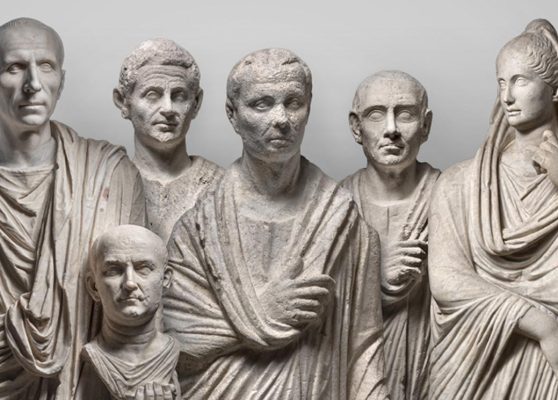24 March - 2 October 2022
The exhibition shows the characteristics of Roman magistracies: collegial, and of limited duration, most often annual. The superior magistrates, consuls, praetors, censors, were elected by the citizens on the basis of a census. They were the only offices that could celebrate this triumph.

It is within this framework that an attractive multimedia exhibition has been created, intended to bring visitors closer to complex subjects and particular monuments, such as epigraphic documents, which are very important direct historical sources that are not immediately readable.
The exhibition focuses on the public functions of magistrates in the Republican era , the cursus honorum, a fundamental aspect of political life in ancient Rome.
With the advent of the Republic , the powers, previously concentrated in the figure of the king, are distributed between the pontifex maximus, who holds the main religious prerogatives, and the consuls, a couple of magistrates endowed with civil powers and command. military.
Access to the cursus honorum required, in addition to a minimum census, the fame and prestige of the ancestors: anyone who did not belong to a few illustrious families was a “new man”.
The rules of access to magistracies and the articulation of positions evolved over time: access to the main magistracies (consuls), initially limited to members of patrician families, was extended to plebeians in the 4th century BC. As the power of Rome grew, other elective magistracies with circumscribed powers were established.
The exhibition will be presented anonymously by five characters represented by five statues acting as narrators: five men and one woman . Their task is to bring the public closer to monuments of historical and symbolic value that celebrate memorable war events, as well as others that illustrate roles related to the administration of the city and the construction of the social prestige of individuals and communities. their families.
Thanks to these exceptional guides, visitors will be able to recall episodes of war and conquests that marked fundamental stages in the history of Rome’s expansion: a striking example is the first naval victory over the Carthaginians in the waters of Milazzo, commemorated by the Colonna Rostrata erected in honor of the consul Gaius Duilius . The exhibition also shows the characteristics of the Roman magistracy : collegial, and of limited duration, most often annual.
Finally, the exhibition constitutes an ideal link between the video installation L’eredità di Cesare e la conquista del tempo (Caesar’s legacy and the conquest of time), visible in the Sala della Lupa e dei Fasti Antichi of the Palazzo dei Conservatori, and the Roma della Repubblica exhibition. Il racconto dell’Archeologia, which will soon be held at the Capitoline Museums, Palazzo Caffarelli.
Tickets: .
full price €13, reduced price €11 (residents €12/€10)
Free access for holders of the “MIC Card” and for the categories provided for by the tariffs in force. Reservation is highly recommended
Hours: .
Daily from 9:30 a.m. to 7:30 p.m.; last entry one hour before closing.
Tickets are no longer available.
Your opinions and comments
Share your personal experience with the ArcheoRoma community, indicating on a 1 to 5 star rating, how much you recommend "Cursus Honorum. The government of Rome before Caesar"
Similar events